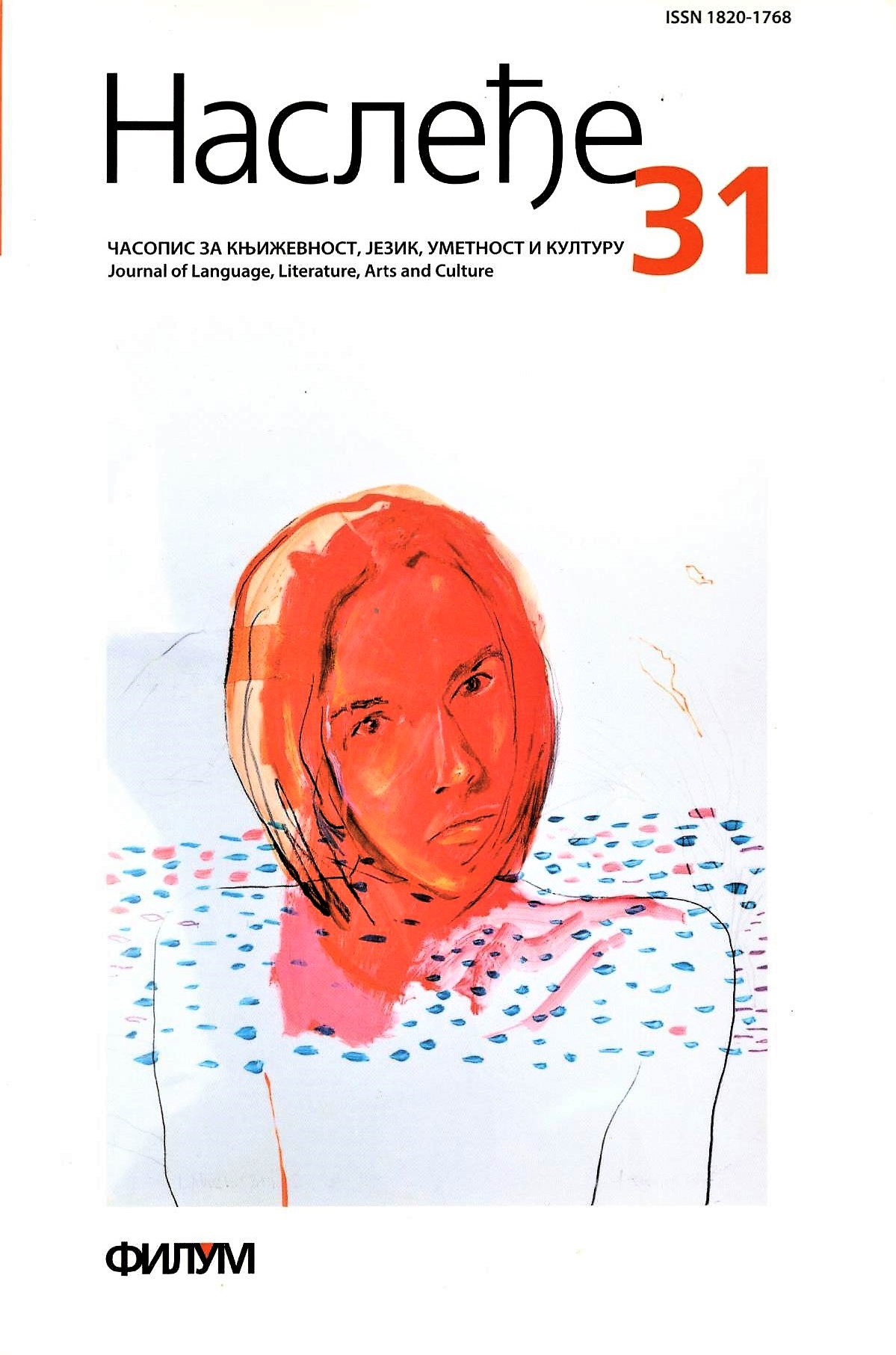METAPHORICAL CONCEPTUALISATION OF LANGUAGE IN THE SERBIAN NEWSPAPER DISCOURSE
METALANGUAGE, LANGUAGE IDEOLOGIES AND SOCIAL COGNITION
Keywords:
metaphor, metalanguage, language ideologiesAbstract
This paper focuses on metaphorical representations of language in the contemporary Serbian newspaper discourse. The underlying idea is that language ideologies are never about language alone (Woolard 1998), but are inseparable from other ideologies regarding social organisation and control, and draw on the powerful symbolism by which language represents identity, group belonging, social and moral order. The data are composed of newspaper articles on language collected from the most popular daily newspapers in Serbia, published between 2009 and 2014. The method is based on discourse analysis and cognitive metaphor theory (Lakoff and Johnson 1980). The analysis shows that language in the Serbian newspaper discourse is conceptualized via several basic conceptual metaphors, mainly those from the domain of WAR and VIOLENCE, reflecting the tensions over language and social change.
References
Aržant 2014: G. Argent, Linguistic neuroses, verbal bacteria and survival of the fittest: Health and body metaphors in Russian media discussions about foreignisms. Language & Communication, 34, 81‒94.
Bel 1994: A. Bell, The discourse structure of news stories. Approaches to media discourse 64‒4.
Kameron 1995: D. Cameron, Verbal Hygiene. London: Routledge.
Kameron 2000: D. Cameron, Good to Talk? Living and Working in a Communication Culture. Sage.
Čarteris-Blek 2004: J. Charteris-Black, Corpus approaches to critical metaphor analysis. Palgrave-MacMillan.
Čilton, Ilijin 1993: P. Chilton, M. Ilyin. Metaphor in Political Discourse: The Case of the Common European House. Discourse & Society, 4(1), 7‒31.
Ferklau 1992: N. Fairclough, Discourse and text: Linguistic and intertextual analysis within discourse analysis. Discourse & Society, 3(2), 193‒217.
Fiske 2013: S. T. Fiske, Social cognition: From brains to culture. Sage.
Gibs, Kameron 2008: R. Gibbs, L. Cameron, The social-cognitive dynamics of metaphor performance. Cognitive Systems Research, 9(1), 64‒75.
Hering 2004: S. Herring, Slouching toward the ordinary: Current trends in computermediated communication. New media & society, 6(1), 26‒36.
Javorski i dr. 2004: A. Jaworski et al. Metalanguage: Social and ideological.
Kevečeš 2008: Z. Koevecses, Conceptual metaphor theory: Some criticisms and alternative proposals. Annual Review of Cognitive Linguistics, 6(1).
Koler 2005: V. Kolller, Critical discourse analysis and social cognition: evidence from business media discourse. Discourse & Society, 16(2), 199‒224.
Lejkof, Džonson 1999: G. Lakoff, M. Johnson, Philosophy in the flesh: The embodied mind and its challenge to western thought. Basic books.
Lejkof, Džonson 2003: G. Lakoff, M. Johnson, Metaphors we live by. 1980. Chicago: U of Chicago P.
Lejkof 1993: G. Lakoff, The contemporary theory of metaphor. Metaphor and thought, 2, 202‒251.
Lejkof 2008: G. Lakoff, Why you can’t understand 21st-century politics with an 18thcentury brain. Penguin.
Lou, Tod 2010: G. Lou, Z. Tod, Guidelines for good practice in metaphor analysis. Metaphor analysis: Research practice in applied linguistics, social sciences and the humanities, 217‒229.
Milroj, Milroj 1999: J. Milroy, L. Milroy, Investigating standard English. Psychology Press.
Musolf 2004: A. Musolff, Metaphor and political discourse. New York: palgrave Macmillan.
Musolf 2006: A. Musolff, Metaphor scenarios in public discourse. Metaphor and Symbol, 21(1), 23‒38.
Riči 2003: L. Ritchie, „ARGUMENT IS WAR” ‒ Or is it a Game of Chess? Multiple Meanings in the Analysis of Implicit Metaphors. Metaphor and Symbol, 18(2), 125‒146.
Semino i dr. 2004: E. Semino et al., Methodological problems in the analysis of metaphors in a corpus of conversations about cancer. Journal of Pragmatics, 36(7), 1271‒1294.
Sten et al. 2010: G. Steen, A method for linguistic metaphor identification: From MIP to MIPVU (Vol. 14). John Benjamins Publishing.
Terlou 2006: C. Thurlow, From statistical panic to moral panic: The metadiscursive construction and popular exaggeration of new media language in the print media. Journal of CMC 11(3), 667‒701.
Terlou 2007: C. Thurlow, Fabricating youth: New-media discourse and the technologization of young people. In Sally Džonson and Astrid Ensslin (eds), Language in the Media. London: Continuum.
Van Dijk 2003: T. Van Dijk, 18 Critical discourse analysis. The handbook of discourse analysis, 352.






